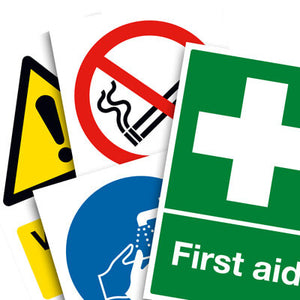


What is ISO 7010
ISO 7010 has been developed by the ISO (International Organization for Standardization) to provide a consistency in shape, colour and graphical symbol required on safety signs across the EU. This means that a fire exit sign in Ireland will be the same as it would in Germany, France or any other EU member. This change will see safety signs in the workplace move away from being essentially a recommendation on best practice, to a European standard. Not all symbols will be changing, and some will have changed only slightly, but you can be assured that any sign which we supply to you will meet your safety obligations.
What is special about EN ISO 7010?
EN ISO 7010 was first introduced in 2003, updated in 2012 and is now a European norm which provides a standardised, easy-to-comprehend safety message wherever you are, whatever language is used.
The purpose of the standard is to introduce a globally recognised range of pictograms and signage shapes and colours. There is a need to standardize a system of giving safety information that relies as little as possible on the use of words to achieve understanding. Lack of standardization may lead to confusion and the risk of accidents.
While any new compliance regulations are unlikely to demand immediate change, it is always best practice to keep your safety signage aligned with the new, compliant symbols to avoid confusion.
Where does EN ISO 7010 apply?
EN ISO 7010 safety signs and symbols are intended for use only in workplaces and other locations where there is a risk to people and where people need to be informed about safety matters from emergency exits to hazardous areas.
What does SafetySigns.ie offer?
SafetySigns.ie always offers the latest safety signage to help you comply with regulation. EN ISO 7010 safety signs are available in different materials for maximum durability for different environments and industrial contexts

